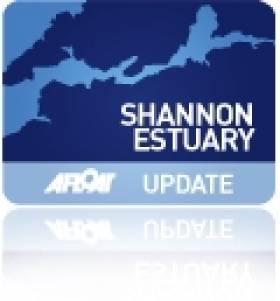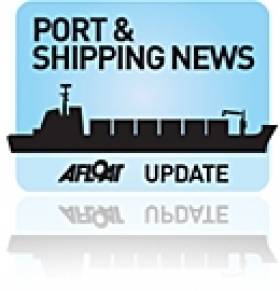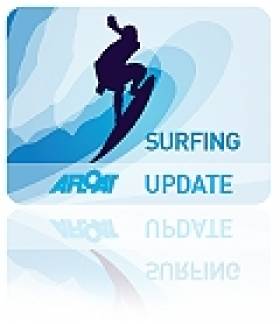Displaying items by tag: Harbours
Harbour Funding Approved for Ballyvaughan, Cappagh, Liscannor, Carrigaholt & Kilbaha
#clare – Minister for Agriculture, Food and the Marine, Simon Coveney, T.D., today announced funds totalling 91,500 euro for projects at Ballyvaughan, Cappagh, Liscannor, Carrigaholt and Kilbaha harbours/piers.
"The safety works scheduled to take place at these harbours will have a hugely positive impact on the livelihoods of fishermen and other users of the piers," explained Clare Senator Tony Mulcahy. He added: "These projects are central to ensuring the safety of all users of the piers. The continued upgrading of these piers is essential to the development of both industry and tourism in the respective areas."
The funding announcement features allocations of €22,500 to Carrigaholt, €37,500 to Ballyvaughan, €9,000 to Kilbaha, and €11,250 to both Liscannor and Cappagh.
According to Senator Mulcahy: "The funding contribution from the Government covers 75% of the total cost of the relevant projects which include repairs to the pier wall in Ballyvaughan, the installation of a handrail to pier access, harbour wall and upgrade of visitor moorings at Carrigaholt, a complete remediation to the existing pier walls at Liscannor, repairs to the sea wall at Cappagh, and repairs to the harbour wall capping stones at Kilbaha."
#ports – A lecture on Green Ports and Harbours by Patrick McCabe will be held this Thursday (March 28th, 6.30pm) at the James Joyce centre, North Great George's Street, Dublin 1.
This lecture explores the changing role of ports and harbours in Ireland and Europe as catalysts for new development in towns and cities. It explores their potential, not just as areas of trade, but their emerging role as knowledge hubs, cultural quarters, recreational landscapes, sustainable energy hubs, and even instigators of agricultural growth.
The lecture draws on the recent work of REDscape in Ireland and the Netherlands.
An ongoing research project by REDscape Landscape & Urbanism, comparing the development of harbours in Asia and Europe led to the creation of a number of spatial initiatives to demonstrate the application of their work, including a vision for the Port of Dublin, "Green Port Dublin" Also discussed are new development strategies, including the public realm plan, led by REDscape for the harbour quarter in Deventer; a self build, bottom up development in an existing industrial area in the Netherlands, recently published in the Dutch yearbook for Landscape Architecture and Urban Design.
All are welcome. Admission is free to ILI members, non-members €5
Kerry Harbour Users Say No to Over-Regulation
#IRISH HARBOURS - Protesters took to the water off Kerry's piers last month in an organised swim drawing attention to proposed harbour bylaws designed to regulate the activities of water users.
“We need to make the public aware they have to make submissions,” Denise Collins told The Irish Times from Kells, which hosted one of the largest swims. “Traditional activities such as swimming will be over-regulated, we fear.”
The proposed bylaws would give Kerry County Council greater control over 16 of the county's 57 harbours and piers, including Kells, Kenmare, Portmagee, Brandon and Ventry.
Under the new bylaws, strict regulations would be placed on the use of loudhailers, landing and unloading passengers and freight, waste and even movement around the harbour.
"Draconian" charges are also set to be imposed on fishermen and other harbour users, while campaingers also feel that a ban on swimming and diving could also be added to the list.
The proposed bylaws already suffered a set-back earlier this year when Kerry County Councillors decided to restart the consultation process to allow the fishing industry, tourism operators and other interests more time to make submissions.
According to the Irish Examiner, only two submissions had been received by the council as of its January monthly meeting, despite senior council officials working for months on the draft proposals.
Cllr Toiréasa Ferris commented that the proposed charges in particular "would have huge implications for fishermen, some of whom might currently be earning only between €40 and €50 for a 14-hour day."
As previously reported on Afloat.ie, charges may also soon be hiked on yachts berthing at Ireland's main fishing harbours, a list that includes Dingle in Co Kerry.
Irish Marine Federation chairman David O'Brien expressed concern at the potential for such charges to damage "the good tourism dividend for coastal towns", noting that for every euro spent on a harbour berth, €10 was normally spent in the locality.
Marine Escapes Cuts in Latest Budget
#BUDGET - Coastguard and lifeboat services, mountain rescue and the Commissioners of Irish Lights will not face any further funding cuts in the latest Budget, according to the Minister for Transport.
The Irish Times reports that, following the reduction of his department's budget, Minister Leo Varakdar stated that substantial cuts have already occurred in the maritime safety sector.
Moreover, he announced an increase in the maritime budget from €70.5 million to €80.3 million, due to provisions for the new Irish Coast Guard helicopter contract.
Earlier this week, Minister for Agriculture, Food and the Marine, Simon Coveney, underlined the importance of the marine sector to Ireland's coastal communities.
As previously reported on Afloat.ie, Minister Coveney announced a round of expenditure estimates on Monday which include increased funding for investment in processing, aquaculture and fishery harbours.
Surfers Claim Harbour will Destroy Top Wave
Surfers in Co Clare and around the world are claiming that a proposed pier development at Doolin will ruin one of the world's top surf spots, Crab Island.
The breaks at Crab Island feature in the Footprints guide to the top 100 surf spots in Europe, and it is thought to be one of the top three spots in Ireland to surf.
The new pier protruding from the coast in the lee of Crab Islandhas been put forward by the Council as a means to enable ferry owners easier access to the Aran Islands route. However, the ferry owners have themselves objected to the proposed structure as insufficient to withstand western swells or provide adequate cover. They have lobbied the council for changes to the design.
The positioning of the new pier, some 100 metres south of the existing structure, could cause wave reflection and refraction to a degree that would kill the wave at Crab Island entirely, and cause a classic regional surf spot to be lost forever. Developing the pier on same site as the existing pier, which would cause less disruption, was rejected out of hand by the council as more expensive.
The southern option was said to have a 'lesser impact on existing users' of the area, howver, no mention of the wave or of surfing is made in the Council's submission documents, nor was there any public consultation, as recommended by a report made this year. The project has already gone to tender.
Among the objectors who have made formal written objections to the pier project are surf groups, tourists from the UK and US, and those whose livelihoods rely on surf tourism, such as surf clubs and board shapers.
The objections have also been echoed on surf sites in America and Australia.




























































